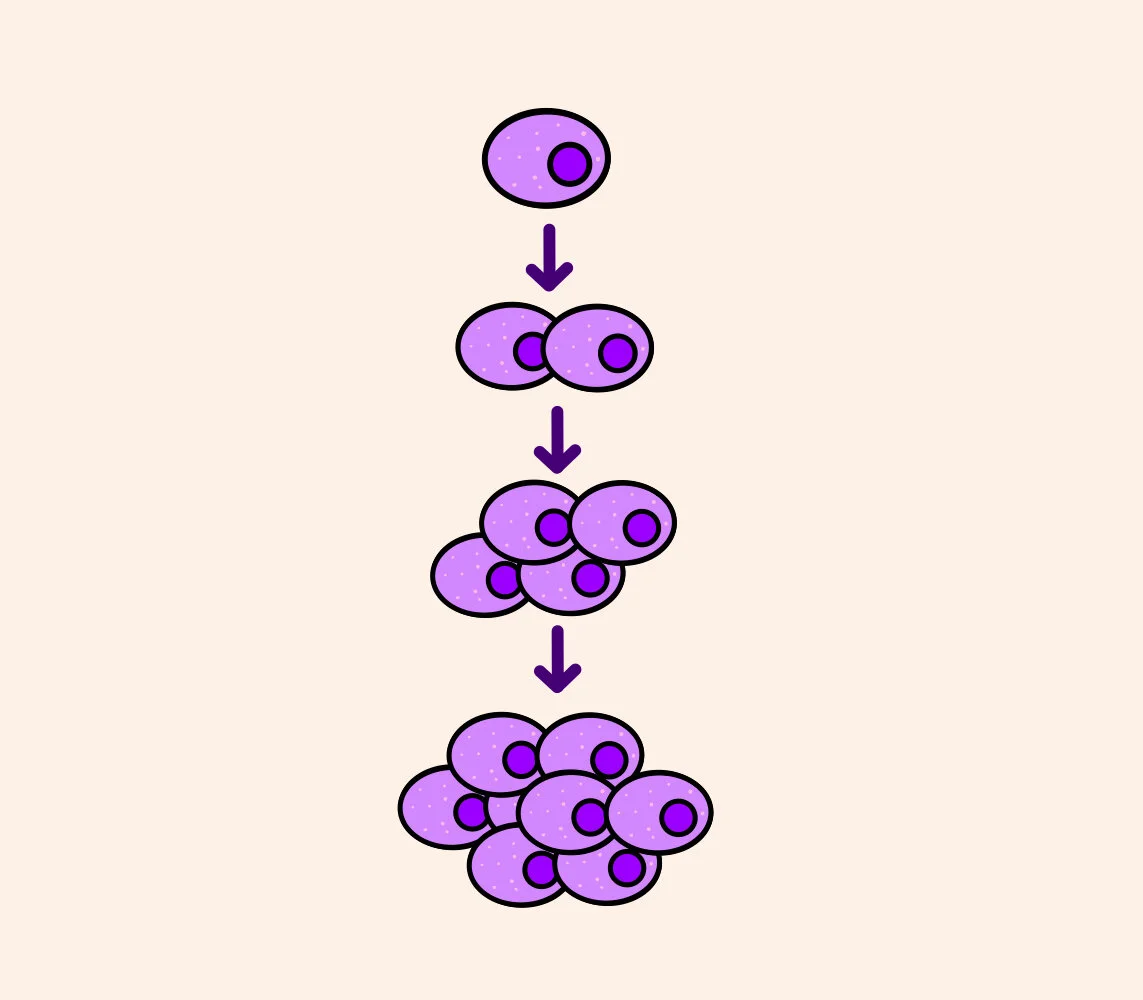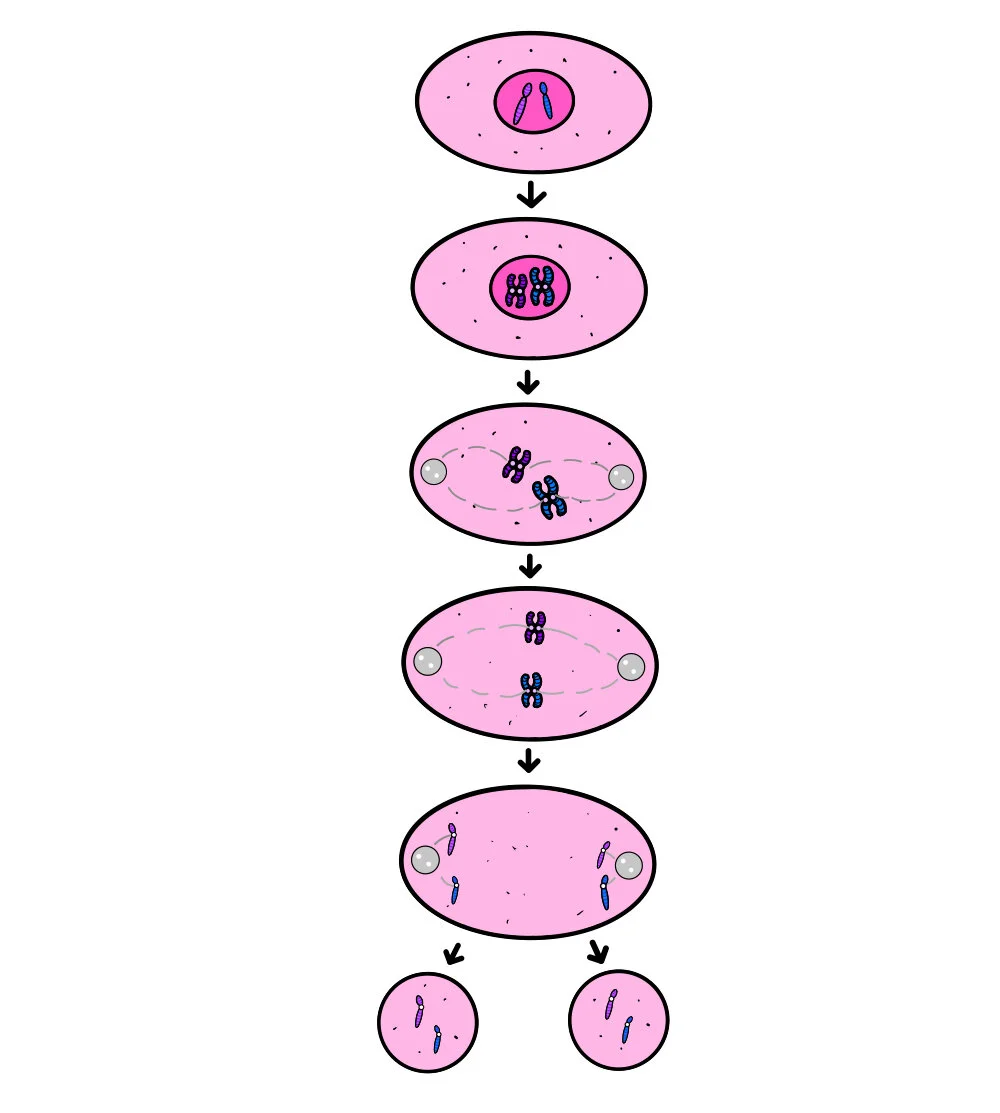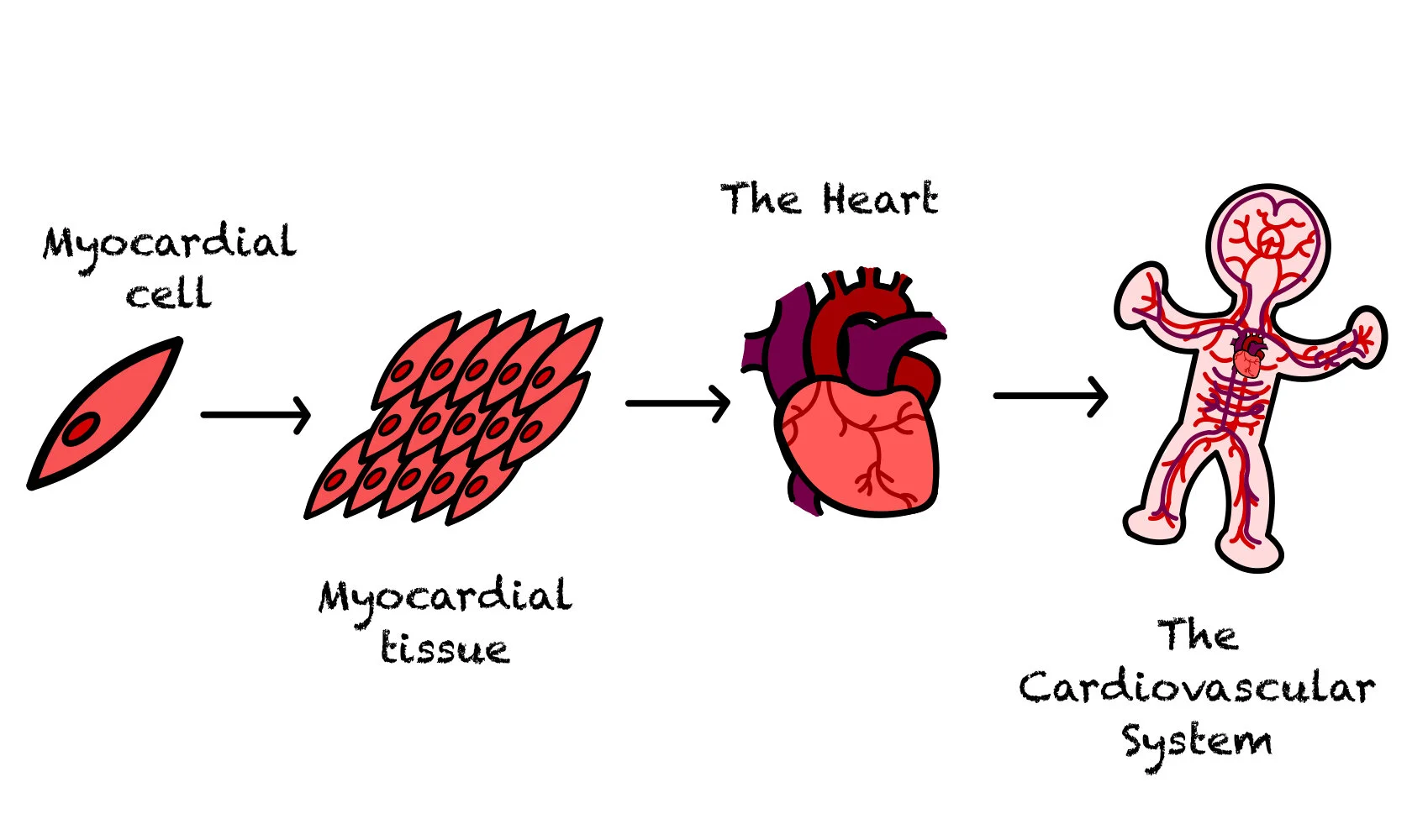Producing New Cells
We need new cells for growth and repair of cells and tissues.
To create new cells, cells must divide. The process of cell division is called MITOSIS.
DNA is bundled together in units called chromosomes. These lie in the nucleus of the cell. Various species have a different number of chromosomes. Humans have 46, horses have 64.
Chromosomes come in pairs - we have 2 sets of 23 chromosomes, 23 coming from our maternal parent, the other coming from our paternal parent.
Having two sets of chromosomes is known as the diploid chromosome compliment, and maintaining this is essential for life.
The role of mitosis is to provide growth and repair, while maintaining this ordered, diploid chromosome compliment.
Cell Division
Cell division begins with the division of the chromosomes (genetic information) in the nucleus. It is vital that an exact replica of the cell DNA is copied for the next cell, in order to maintain the precious diploid chromosome compliment.
From one cell, one round of cell division makes two cells, the next round makes 4 cells, the next makes 8 cells, then 16, then 32, and so on.
Mitosis Steps
Mitosis is split into 5 clear steps.
Step 1
The chromosomes in the nucleus shorten and bundle up. They can now be seen as pairs of CHROMATIDS. These chromatids are joined by what is called the CENTROMERE.
Step 2
The membrane of the nucleus is broken down and the pairs of chromatids are free to move
Step 3
Spindle fibres (like small ropes) attach to the centromeres that bind chromatids together. Once bound, they pull them towards the centre equator of the cell.
Step 4
The spindle fibres contract and drag the sister chromatids apart from one another to opposite poles of the cell.
Step 5
With the chromosomes at opposite sides of the cell, the cytoplasm then divides, and two sister cells are formed.
Specialisation
Stem cells are unspecialised cells, meaning that they have the potential to turn into any type of specialised cell.
Specialised cells include cells with a specific role, including skin cells, nerve cells and red blood cells.
Stem cells divide in order to self-renew. They are heavily involved in growth and repair.
Growing embryos have a large amount of stem cells. Adults still have stem cells, but they lie in very specific places in your body, like your bone marrow.
Stem cell research is heavily financed as stem cells have the potential to create new cells and new tissues. This could help with many barriers in medical research.
Cell Organisation
As cells specialise, they create many cells, which in turn create tissues, which create organs.
So, lots of similar cells together creates tissues, like muscle tissue, and a combination of different tissues creates organs, like the heart. Organs are then components of systems, for example the heart is an organ of the cardiovascular system.
Muscle cell (cell) -> Myocardial tissue (heart muscle tissue) -> Heart (organ -> Cardiovascular system (system).
This is how all systems in animals and plants are built. Another example:
Neurone (nerve cell) -> Grey matter (tissue in the brain) -> Brain (organ) -> Neurological system (system)
These systems can also be found in plants.
Key Points!
-
Producing New Cells
To create new cells, cells must divide. The process of cell division is called MITOSIS.
DNA is bundled together in units called chromosomes. These lie in the nucleus of the cell. Various species have a different number of chromosomes. Humans have 46, horses have 64.
Chromosomes come in pairs - we have 2 sets of 23 chromosomes, 23 coming from our maternal parent, the other coming from our paternal parent.
-
Mitosis
Step 1
* The chromosomes in the nucleus shorten and bundle up. They can now be seen as pairs of CHROMATIDS. These chromatids are joined by what is called the CENTROMERE.
Step 2
* The membrane of the nucleus is broken down and the pairs of chromatids are free to move
Step 3
* Spindle fibres (like small ropes) attach to the centromeres that bind chromatids together. Once bound, they pull them towards the centre equator of the cell.
Step 4
* The spindle fibres contract and drag the sister chromatids apart from one another to opposite poles of the cell.
Step 5
* With the chromosomes at opposite sides of the cell, the cytoplasm then divides, and two sister cells are formed.
-
Specialisation
Stem cells are unspecialised cells, meaning that they have the potential to turn into any type of specialised cell.
Specialised cells include cells with a specific role, including skin cells, nerve cells and red blood cells.
Stem cells divide in order to self-renew. They are heavily involved in growth and repair.
-
Cell Organisation
Lots of similar cells together creates tissues, like muscle tissue, and a combination of different tissues creates organs, like the heart. Organs are then components of systems, for example the heart is an organ of the cardiovascular system.




